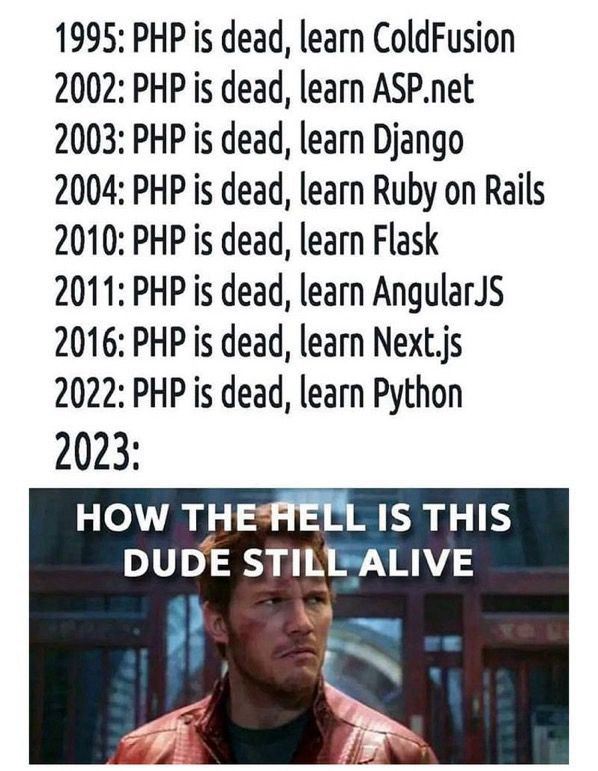this post was submitted on 30 Oct 2023
977 points (96.1% liked)
Programmer Humor
32710 readers
609 users here now
Post funny things about programming here! (Or just rant about your favourite programming language.)
Rules:
- Posts must be relevant to programming, programmers, or computer science.
- No NSFW content.
- Jokes must be in good taste. No hate speech, bigotry, etc.
founded 5 years ago
MODERATORS
you are viewing a single comment's thread
view the rest of the comments
view the rest of the comments

The answer for the deep copy would seem to be a combination of a static recursive function to copy the array while cloning the objects inside, with setting the __clone() magic function in your objects to break the references, no? Granted it’s not a built in function, but not difficult to implement.
Arrays are passed by copy by default. Every scalar or array value is copied by value. Every other thing (objects basically) is copied by reference.
Passing array by reference passes everything it used to copy by reference.
Attempting to clone an array will result in an error.
Reassignment of a variable containing an array will do the same as if passed to a function by value.
Reassignment of a variable containing an array using the reference operator will do the same as if passed to a function by reference.
So, in order to deep copy an array, just reassign and recursively traverse the array calling
cloneon each object. Of course, this would break (or not, depending on the intended use) when the same object is referenced multiple times under different keys.Sorry for being lazy so no sources for now. But based on my research back then. Using clone (on arrays) is actually slower then json_encode/json_decode.
So there are some cool optimization tricks going on in the background. But that doesn't make it any more intuitive for me.